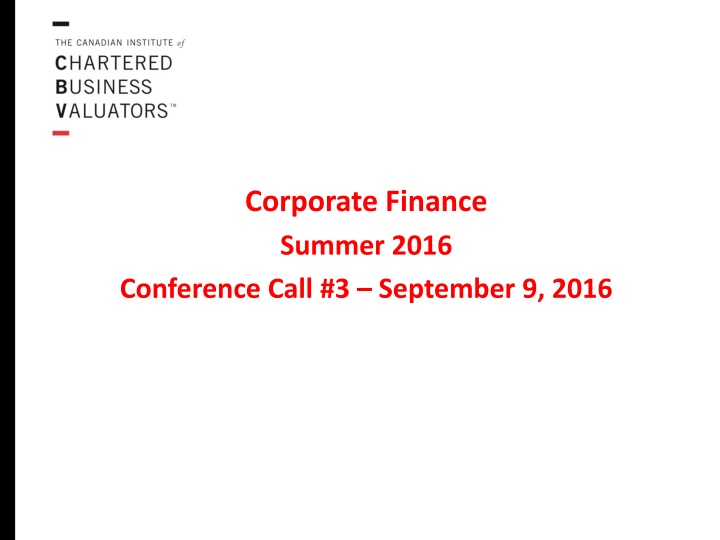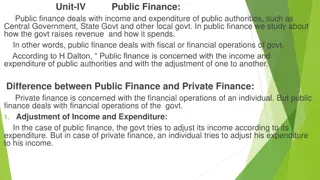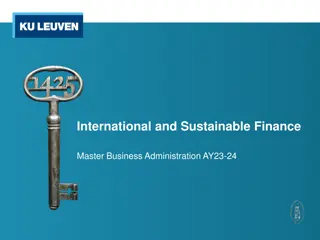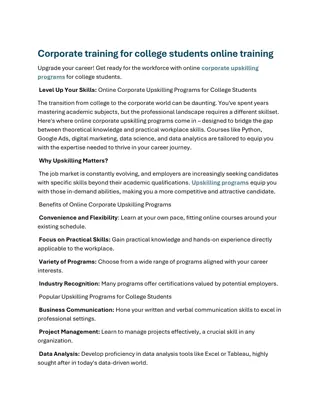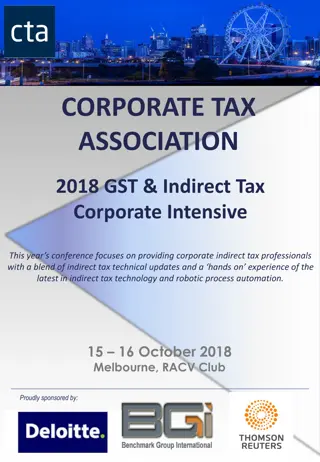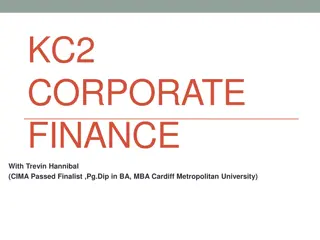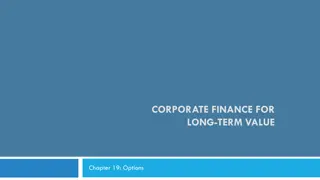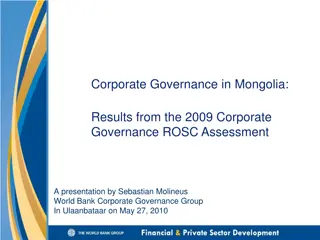Corporate Finance Summer 2016 Conference Call
The Corporate Finance Summer 2016 Conference Call agenda includes housekeeping details, discussions on exam topics, and Q&A sessions. Key topics covered involve exam dates, LBO analysis, debt structures, convertible debt features, and risk assessment in finance.
Download Presentation

Please find below an Image/Link to download the presentation.
The content on the website is provided AS IS for your information and personal use only. It may not be sold, licensed, or shared on other websites without obtaining consent from the author.If you encounter any issues during the download, it is possible that the publisher has removed the file from their server.
You are allowed to download the files provided on this website for personal or commercial use, subject to the condition that they are used lawfully. All files are the property of their respective owners.
The content on the website is provided AS IS for your information and personal use only. It may not be sold, licensed, or shared on other websites without obtaining consent from the author.
E N D
Presentation Transcript
Corporate Finance Summer 2016 Conference Call #3 September 9, 2016
Agenda Housekeeping Q&A Discuss March 2016 Exam Topics Discuss other recent Exam Topics Q&A
Housekeeping Exam Date = September 27, 2016 Securexam is mandatory unless an accommodation has been granted Ensure your qualification exam has been submitted Ensure you arrive at your exam centre at least 30 minutes before examination begins Previous communication may have stated candidates need to arrive 60 minutes in advance. According to the CICBV, 30 minutes is fine
Q&A ?
March 2016 Exam Question 1 Question synopsis: Client looking to complete an LBO today, with the intention of holding the investment for 5 years and earning a specific return Key question elements: Develop a 5 year forecast Revenues, EBITDA, Working Capital, Capex, Debt, Income taxes (not relevant to this particular question) Debt: Term Loan, Sub-debt, Operating line of credit Term loan is relatively straight forward (use beginning and ending balance to driver interest cost) Sub-debt (PIK or No PIK depends on cash availability, including line of credit) Line of Credit should be calculated last as the ending balance drives interest expense Be cognizant of covenants, good to test each year to ensure debt availability is in line with covenants Conflict between covenants and cash flow optimization Calculate compounded PIK balance Communicate impacts of leverage Other issues: EV to Equity bridge, sensitivity testing
March 2016 Exam Question 2 Question synopsis: Subordinate debt lender looking to issue debt with a convertible feature and earn a specific return Key question elements: Calculate the future value of a debt product with a 9% interest rate Apply forecast rates in various scenarios to calculate business value and the develop an EV to Equity bridge for each scenario Calculate annualized returns Calculate break even points based on contracted triggers Discuss the relationship between equity value and other elements of the capital structure (ie. when term debt is paid or unpaid and the impact that has on convertible debt) Discuss riskiness of fixed vs. variable loans, given specific context
March 2016 Exam Question 3 Question synopsis: Definitional question relating to preferred rights Key question elements: Demonstrate an understanding of preferred share rights including pros and cons Excellent example of a question that has more marks available than the maximum allotment Question 4 Question synopsis: Calculate share price growth required to obtain a specific return, taking into account the impact of dilutive securities and delineate between business value (EV) and equity value Key question elements: Use case facts to calculate EV (e.g. Debt t equity ratio) Calculate dilutive impact of warrants Calculate holding period return
March 2016 Exam Question 5 Question synopsis: A company is going through restructuring and the impacts to new investors, existing investors, existing creditors, and other stakeholders needs to be assessed Key question elements: Sources and uses table Recognize that all elements of the capital structure should be included in a sources and uses table (including shareholder loans) Sources must equal uses Liquidation value vs. going concern value Understand priority of cash flows based on capital structure hierarchy and creditors claims Calculate returns
Other Recent Exam Topics Raising capital / divestment process / preparing a CIM Cost / benefit of owning preferred shares vs. common shares. Optimizing returns relative to risk Define and demonstrate an understanding of mezzanine financing and the situations where it is useful Capital structure hierarchy (lowest risk capital through highest risk capital) Sources and uses of funds for a transaction Sensitivity analysis and its impact on debt covenants Stock option plans and incentive compensation that impacts capital structure and ownership structure Synergies in the context of M&A transactions Earn-out consideration in the context of M&A Key-man risk in the context of M&A Asset based lending Select elements from additional Module 5 readings
Q&A ?
